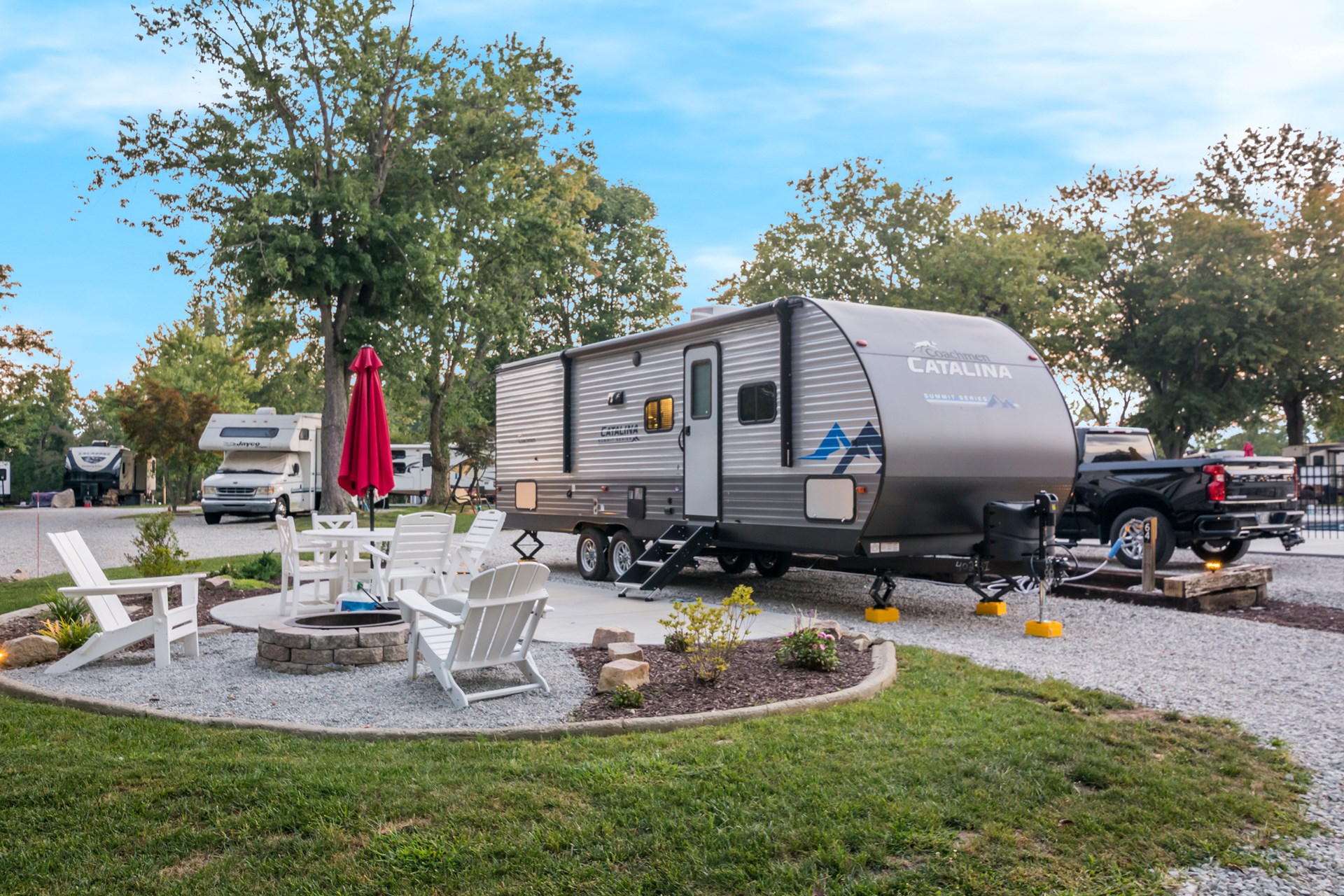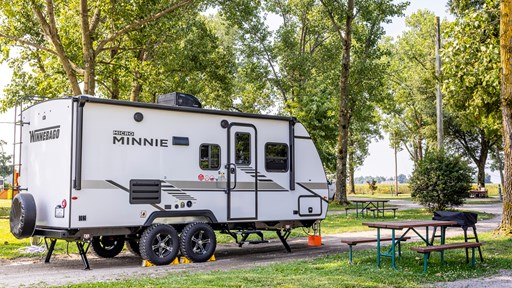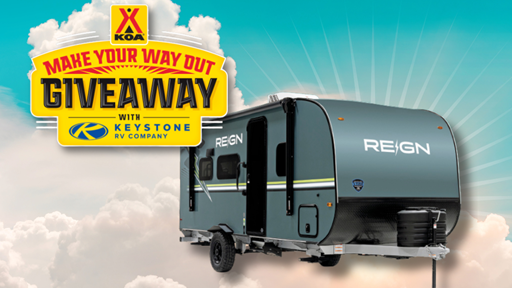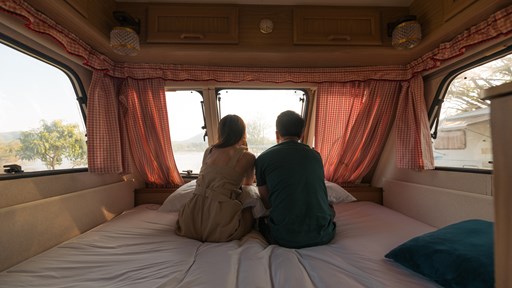Whether you’re a weekend warrior or a full-time camper, you should keep a lookout for mold in your RV walls, carpet, upholstery and other areas. Black and white mold, mildew and fungus growth in your camper can crop up on occasion, but you should not leave it untreated. Once mold or mildew has formed in your rig, they seriously undermine the value of your RV. Fungal growth can also damage surfaces and harm your health.
It can be tricky to clean mold and mildew properly once they’ve formed, so following a few tips and tricks to prevent mildew from growing in your RV is your best line of defense.
What Causes Black Mold in an RV?
Mold, mildew and fungus issues come from dampness and a lack of airflow. Mold spores enter your motorhome through openings like the air conditioner/heating system, vents, windows and doorways, or it is carried inside on shoes and clothing. Mold spores gather and grow in moist, dark places. If these mold spores drop on places with these qualities, the mold will grow.
Many places in your RV have the nutrients mold needs to thrive. The most common areas where mold grows in campers include:
- Drywall
- Wallpaper
- Ceiling tiles
- Flooring
- Carpet
- Insulation
- Paint
- Fabric
- Paper products
- Wood products
- Refrigerator
- Outdoor kitchen
- Baggage doors
- Storage areas
- Cardboard
- Dust
- Upholstery
You may think that roof leaks or sink floods are the main culprits of RV molding. However, most of the time, they form during those months when your RV is in storage. Humid storage facilities or warm tarps are incubators for mold and mildew.
Here are some of the signs indicating your RV has mold growth:
- A musty or earthy smell
- Black or green discoloration on surfaces
- Bulges or bumps under the drywall or paint
- Peeling paint
Health Effects of Mold and Mildew in Your RV
Mold, fungus and mildew can lead to serious health concerns. Mold produces allergens, irritants and potentially toxic substances. Inhaling or touching the mold or its spores can cause:
- Wheezing
- Coughing
- Sneezing
- Red eyes
- Stuffy nose
- Runny nose
- Skin rash or itching
People with preexisting health conditions, like asthma or mold allergies, can have more intense reactions. They exacerbate or even create certain respiratory complaints like pneumonitis or shortness of breath.
It’s important to use several methods or products in the fight against mold and mildew. Not only will this protect your RV, but it will also save you money in the long run and ensure your RV is a pleasant place to be.
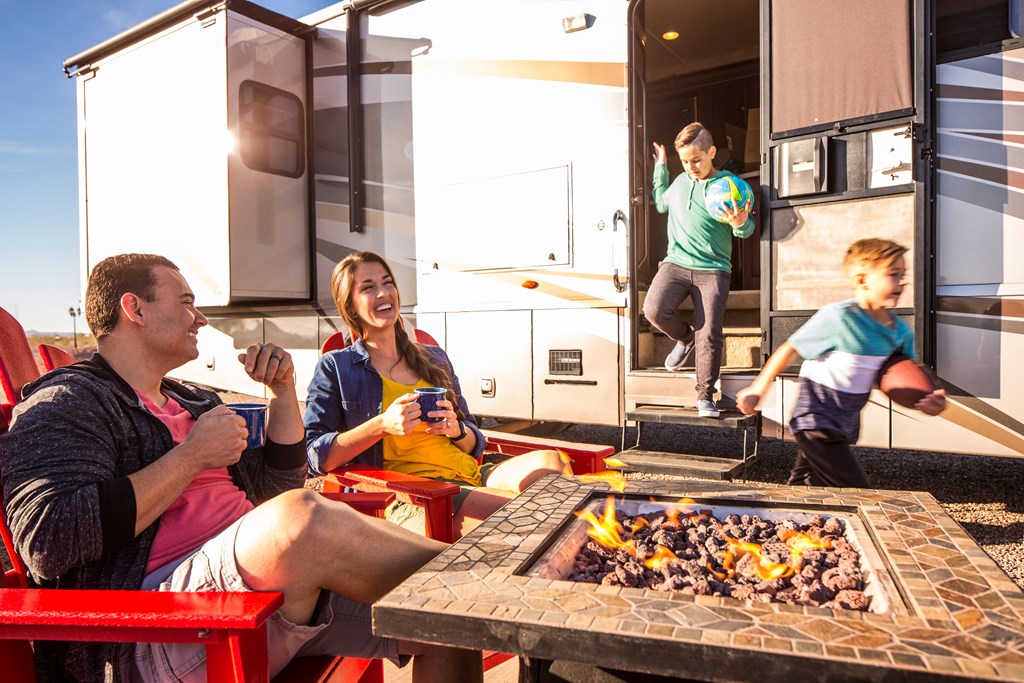
8 Tips for Preventing Mold and Mildew From Growing in Your RV
Since moisture and a lack of airflow are the two main causes of mold growth, you can keep mold out of your motorhome by removing moisture and keeping the air circulating. To spare yourself a lot of frustration and headaches, learn how to prevent mold in your RV during storage. These mold- and mildew-busting tips will ensure your RV remains clean and clear of these issues:
- Store your camper under cover: If possible, store your RV in an enclosed storage unit to protect it from condensation. If you store your camper outside, cover it with a specialized RV cover tarp. When you cover your vehicle during the off-season, find a cover that is waterproof, blocks UV rays and promotes the ventilation of water vapor. While specialized RV tarps can be a bit expensive, they’re your best mold and mildew prevention method.
- Inspect your RV regularly: Before heading out on the open road or putting your camper in storage, inspect your RV’s interior and exterior for mold growth or structural problems, like rust, discoloration and bubbling. Check your pipes, roof, plumbing, sinks, toilets and ceiling to ensure there are no cracks or leaks allowing moisture inside. If you identify damage, fix these as soon as possible. It’s important that you inspect your RV at least twice a year.
- Run a dehumidifier: Dehumidifiers cut back moisture to keep your camper free from mold. Run the dehumidifier for a few days before putting your RV in storage. You can find many types of dehumidifiers for RVs. Desiccant dehumidifiers utilize specialized crystals to remove moisture without electricity. If your storage spot has electricity, you can run a small plug-in dehumidifier the entire time your RV is in storage.
- Encourage proper ventilation: Mold and mildew sometimes occur because of condensation that never has a chance to dry out. Open cupboards and closets to encourage airflow inside your RV during storage. Open the windows and vents if you store your camper inside. Also, an unventilated bathroom can breed mold and mildew. After taking a shower, open the door and windows and run a fan or vent — anything to ensure the room dries out completely.
- Run a fan: Fans keep air moving in your RV so moisture won’t settle. Fans with space heaters can keep moisture from forming overnight when the temperatures outside take a dip or humidity from settling after someone has taken a hot shower.
- Wipe wet surfaces: If you see condensation on your RV’s surfaces, wipe it up — mildew and fungus need only a little moisture to grow. Wipe the closets, shelves, under furniture, countertops, sinks, kitchen and bathroom.
- Run your range fan if cooking: Cooking generates a lot of heat and moisture, so keep the range fan running or the windows open when using your stovetop.
- Measure humidity levels: Monitor the humidity in your camper using a hygrometer. Humidity levels in your motorhome should be between 30% and 50%.
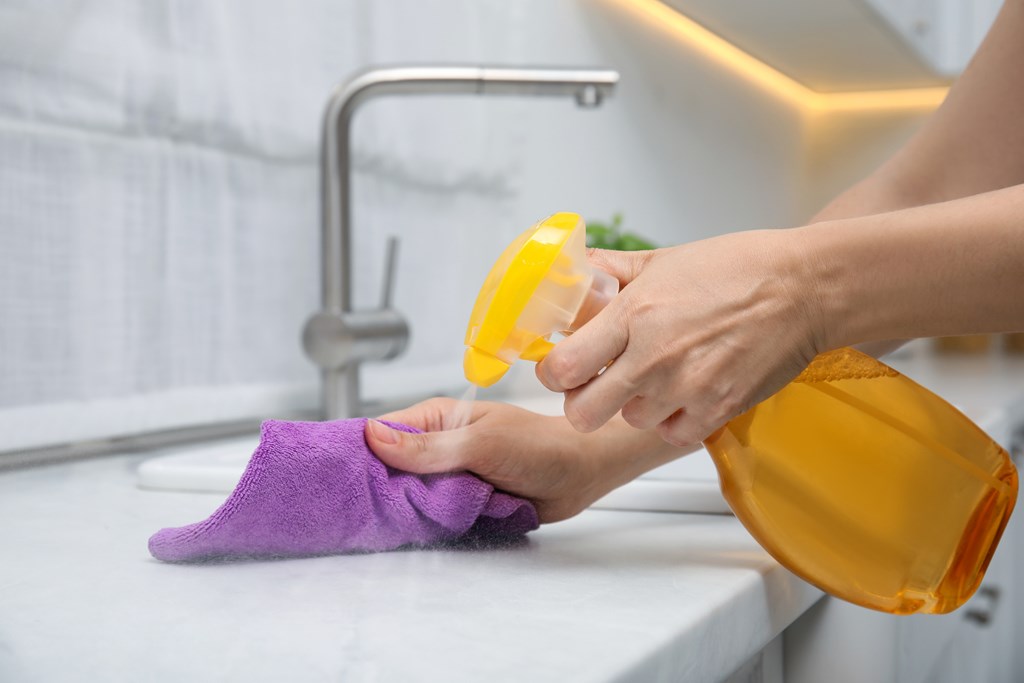
How to Get Rid of Mold in Your Camper
Prevention will always be your best mold- and mildew-fighting technique. However, if you discover fungus, mildew or mold forming within your RV, you need to safely remove the contamination from your camper.
Treat the mold right away — the longer the fungus is there, the harder it will be to remove it. Follow these steps to eliminate mold from inside your camper:
- Take out the moldy items and replace them if the fungus is widespread.
- Dry out the interior as soon as possible.
- Wash hard surfaces with an effective cleaner.
- Make sure your rig is thoroughly cleaned.
- Get an air purifier, dehumidifier or air conditioner to keep you and your loved ones from breathing in mold spores.
- Leave the area open to air and sunlight if possible.
You can remove mold from hard surfaces with commercial products or homemade solutions such as:
- Vinegar: Vinegar is an effective cleaning agent for killing mildew and mold. It is most effective if you do not dilute with water.
- Tea tree oil: This oil has antifungal properties that are effective against mold. Mix two teaspoons of tea tree oil in two cups of water.
- Bleach solution: Bleach can be an effective way to remove mold on a nonporous surface, but be careful about using bleach on the canvas of a tent camper — it could remove the sealant from the canvas and make it leak.
- Rubbing alcohol: The acidity in the rubbing alcohol kills mold spores. Mix equal parts rubbing alcohol and water.
Spray the cleaner onto the mold, let it sit for a few minutes and use a damp cloth or paper towel to wipe clean.
Once you have cleaned up the mold, you can address what caused it. Mold is a sign of water or moisture problems, so look for the source of the mold and make repairs to prevent future mildew growth. To help prevent mold, you can:
- Check pipes to identify and repair leaks.
- Waterproof the RV by sealing seams and joints with a flexible sealant.
- Repair tears in the canvas or replace it if the damage is extensive.
Protect Your RV With the Right Insurance Plan
Insurance is a valuable strategy to increase the overall protection of your RV. It is an effective way to safeguard your assets and lower the overall risks of damage on and off the road. RV insurance is similar to auto or home insurance, and insurance plans are most useful against damage caused during collisions with other vehicles or objects. Many plans will also cover your legal or medical fees that result from accidents. Some insurance policies also offer comprehensive coverage against weather-related damage and theft of belongings or the RV.
Progressive is a leading insurance provider, offering top-of-the-line services to give you the peace of mind you need in your plan. They will work with you to develop a personalized RV insurance plan to mitigate the risks associated with traveling in an RV. However, their plans designed for RVs do not cover mold or fungus growth, which means you will have to tackle these issues out of pocket. Despite this, Progressive will be able to safeguard your Class A, B or C motorhome at cost-effective rates.
Why Trust Kampgrounds of America?
Since 1962, KOA has been connecting campers with the great outdoors and helping families and friends create unforgettable memories. With over 60 years of experience, KOA is a trusted authority on all things camping — from how to care for an RV and where to go for an epic getaway to what to pack for your adventures.
Additionally, with more than 500 campgrounds across the United States and Canada, KOA offers locations close to the places you want to visit, such as national parks, the beach, the mountains and theme parks. Count on KOA for quality campground amenities and up-to-date, relevant information to help you make the most of your camping excursion.
Book Your Next RV Camping Trip With KOA
Long trips, the open road, the freedom and the breathtaking sights along the way draw many to RV life. As you plan your next camping trip, reserve a campsite at Kampgrounds of America. KOA has over 500 campgrounds throughout North America with convenient campsites, various amenities, helpful staff and access to the great outdoors. KOA Resort, Journey and Holiday campgrounds give you and your family a fun and memorable camping experience.
Kampgrounds of America have RV Sites at campgrounds across the U.S. and Canada. Find a KOA Campground near your destination and reserve a site for your next overnight today. Don’t wait! Peak season fills up fast.
About the Author: Kampgrounds of America
Kampgrounds of America is the largest system of open-to-the-public campgrounds in the world, with over 500 locations across the United States and Canada. Founded in Billings, MT in 1962, KOA’s family of campground brands – KOA Journey, KOA Holiday and KOA Resort – today serve more than a million camping families each year. KOA is dedicated to “connecting people to the outdoors and each other” by providing people with a variety of camping experiences and the information they need to make the most of their camping trip. Read more of their camping and travel resources by visiting KOA.com/blog.



















